
The Wright brothers, Orville Wright and Wilbur Wright, were American aviation pioneers generally credited with inventing, building, and flying the world's first successful airplane. They made the first controlled, sustained flight of an engine-powered, heavier-than-air aircraft with the Wright Flyer on December 17, 1903, four miles (6 km) south of Kitty Hawk, North Carolina, at what is now known as Kill Devil Hills. In 1904 the Wright brothers developed the Wright Flyer II, which made longer-duration flights including the first circle, followed in 1905 by the first truly practical fixed-wing aircraft, the Wright Flyer III.

The bicycle business of the Wright brothers, the Wright Cycle Company successively occupied six different locations in Dayton, Ohio. Orville and Wilbur Wright began their bicycle repair, rental and sales business in 1892, while continuing to operate a print shop. These shops helped them fund their aeronautical studies.
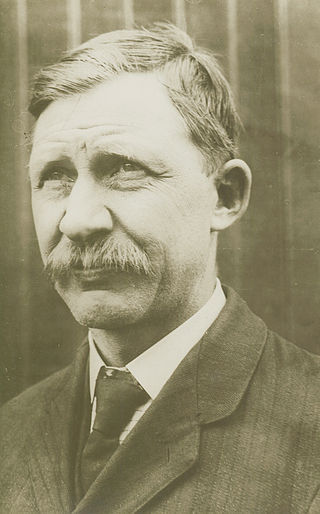
Charles Edward Taylor was an American inventor, mechanic and machinist. He built the first aircraft engine used by the Wright brothers in the Wright Flyer, and was a vital contributor of mechanical skills in the building and maintaining of early Wright engines and airplanes.

Milton Wright was the father of aviation pioneers Wilbur and Orville Wright, and a bishop of the Church of the United Brethren in Christ.

The Dawes Arboretum is a nonprofit arboretum located in Newark, Ohio. It includes nearly 2,000 acres (8 km2) of plant collections, gardens and natural areas. The site includes approximately 12 miles (19 km) of hiking trails and roadways for a four-mile (6 km) driving tour.
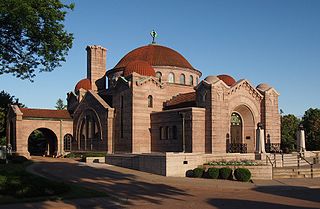
Lakewood Cemetery is a large private, non-sectarian cemetery located in Minneapolis, Minnesota, United States. It is located at 3600 Hennepin Avenue at the southern end of the Uptown area. It is noted for its chapel which is on the National Register of Historic Places and was modeled after the Hagia Sophia in Istanbul, Turkey.

Edward Andrew Deeds was an American engineer, inventor and industrialist prominent in the Dayton, Ohio, area. He was the president of the National Cash Register Company and, together with Charles F. Kettering, founded Dayton Engineering Laboratories Company (Delco), an early innovator in automotive technology. Deeds partnered with the Orville Wright in an early airplane manufacturing venture and led the military aircraft production effort in World War I.

Hawthorn Hill is the house that served as the post-1914 home of Orville, Milton and Katharine Wright. Located in Oakwood, Ohio, Wilbur and Orville Wright intended for it to be their joint home, but Wilbur died in 1912, before the home's 1914 completion. The brothers hired the prominent Dayton architectural firm of Schenck and Williams to realize their plans. Orville and his father Milton and sister Katharine occupied the home in 1914.

Huffman Prairie, also known as Huffman Prairie Flying Field or Huffman Field is part of Ohio's Dayton Aviation Heritage National Historical Park. The 84-acre (34-hectare) patch of rough pasture, near Fairborn, northeast of Dayton, is the place where the Wright brothers undertook the task of creating a dependable, fully controllable airplane and training themselves to be pilots. Many early aircraft records were set by the Wrights at the Huffman Prairie.

Carillon Historical Park is a 65-acre park and museum in Dayton, Ohio, which contains historic buildings and exhibits concerning the history of technology and the history of Dayton and its residents from 1796 to the present. As a part of the University of Dayton, the historical elements of the park were the brainchild of Colonel Edward Deeds. The major sections include settlement, transportation, invention, and industry. The park also contains the Carillon Park Railroad, a 7+1⁄2 in gauge miniature railway.

Dayton Aviation Heritage National Historical Park is a United States National Historical Park in Dayton, Ohio that commemorates three important historical figures—Wilbur Wright, Orville Wright, and poet Paul Laurence Dunbar—and their work in the Miami Valley.
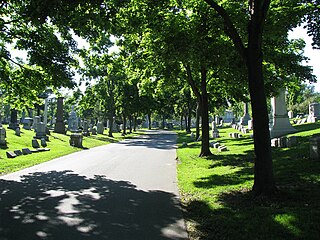
Forest Lawn Cemetery is a historic rural cemetery in Buffalo, New York, founded in 1849 by Charles E. Clarke. It covers over 269 acres (1.1 km2) and over 152,000 are buried there, including U.S. President Millard Fillmore, First Lady Abigail Fillmore, singer Rick James, Congresswoman Shirley Chisholm, and inventors Lawrence Dale Bell and Willis Carrier. Forest Lawn is on the National Register of Historic Places.
Harry Aubrey Toulmin Sr. was the American lawyer located in Springfield, Ohio, who wrote the "flying machine" patent application that resulted in the patent granted to Dayton inventors Wilbur and Orville Wright on May 22, 1906.

Katharine Wright Haskell was an American teacher, suffragist, and the younger sister of aviation pioneers Wilbur and Orville Wright. She worked closely with her brothers, managing their bicycle shop in Dayton, Ohio, when they were away; acting as their right-hand woman and general factotum in Europe; assisting with their voluminous correspondence and business affairs; and providing a sounding board for their far-ranging ideas. She pursued a professional career as a high school teacher in Dayton, at a time when few middle-class American women worked outside the home, and went on to become an international celebrity in her own right. A significant figure in the early-twentieth-century women's movement, she worked actively on behalf of woman suffrage in Ohio and served as the third female trustee of Oberlin College.

The Engineers Club of Dayton was founded by Colonel Edward A. Deeds and Charles F. Kettering in Dayton, Ohio in 1914. The club's building is listed on the National Register of Historic Places and the history of the club involves notable Daytonians and historical figures such as Orville Wright.

Schenck and Williams was an architectural firm in Dayton, Ohio. The firm's projects included the Hawthorn Hill home for Orville Wright and his sister and father, the Dayton Young Men's Christian Association Building, and the Engineers Club of Dayton building. The firm's partners were Harry J. Williams and Harry I. Schenck, both 1903 Cornell University graduates and members of the American Institute of Architects Several other Cornell graduates including Nelson J. Bell (1904), Robert E. Schenck (1912), Albert R. Reilly (1914), Wolfe Marcovitch (1915), Leslie L. Lambert (1916), Ernst W. Kurz (1917) and Ellason R. Smith (1917) came to work for the firm.

The Greenville Mausoleum is an Egyptian Revival structure in Greenville, Ohio, United States. Built in 1913, this historic mausoleum is built of concrete covered with courses of limestone, resting on a foundation of granite and covered with a roof of ceramic tiles. Among its most distinctive elements are the marble pillars, topped with capitals of the Doric order, that line the main entrance. The main portion of the interior, built in a basilican style with multiple aisles, contains approximately four hundred concrete and marble crypts, and the building's wings house individual family crypts. It is lit by twelve clerestory windows under the roofline.
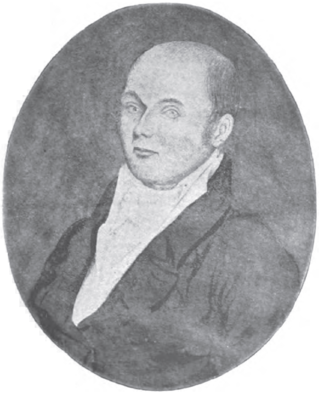
Benjamin Van Cleve was a pioneer settler of Dayton, Ohio in the United States. He held several offices in the town.
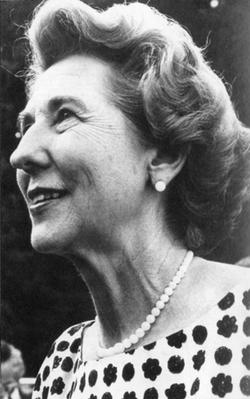
Virginia Weiffenbach Kettering was Dayton, Ohio's leading philanthropist and patron of the arts.
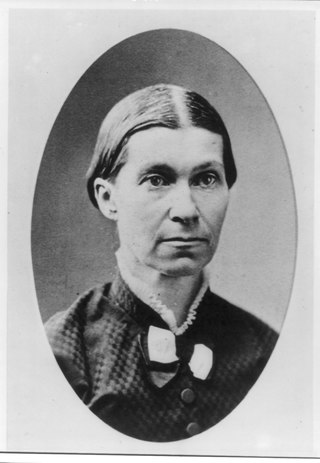
Susan Catherine Koerner Wright was the mother of aviation pioneers Wilbur and Orville Wright, and wife of Milton Wright. She gave birth to seven children, and fostered in them an interest in carpentry and mechanics with her deep skills in those areas.
























